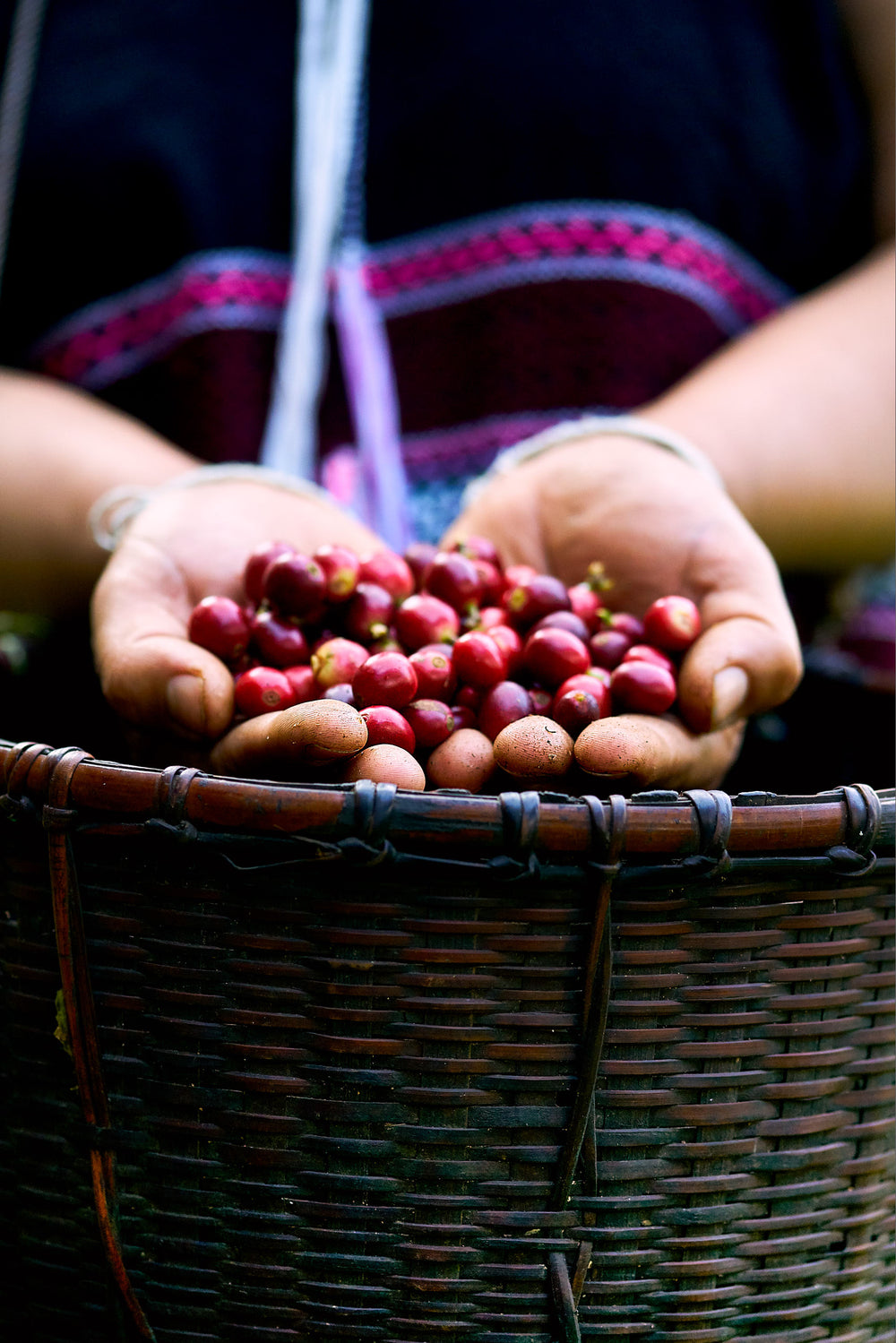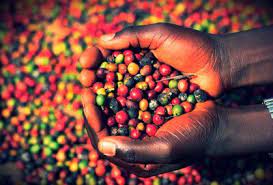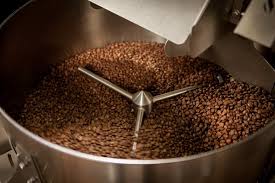How Coffee is Decaffeinated?

Many of us have wondered to ourselves how coffee is decaffeinated, but few of us take the time to learn about this fascinating process. If you’ve recently started getting into coffee and are thinking about starting to make some better tasting beverages at home – this is almost certainly a question you’ve come to think about.
Coffee is currently the world's second favourite beverage, with good old water taking spot number one. However, many people simply use it to summon up previously non-existent energy to get me through those early mornings and seemingly endless night shifts. To them, the thought of having their morning coffee decaffeinated is a crazy concept.
I was like this for a long time. Then something changed. I can now, and regularly do, enjoy a cup of decaf coffee. If you’re reading this, I imagine you too are also going through this process of change, and it’s left you curious. You want to know more about the coffee making process.

Is Decaf Coffee Bad for You? The Health Benefits of Coffee
Not everybody knows it, but drinking Coffee has several health benefits and these are the same for both decaf and regular coffee drinkers.
If you're a coffee drinker, evidence shows that you have a higher level of protection against poor health. This is because several of the properties in coffee help to guard against potential medical issues. Strokes, kidney disease, coronary heart disease, and diabetes are all far-less common in regular coffee drinkers.
Coffee helps your body to process sugar/glucose more efficiently. This was discovered from a recent study that showed that people who drink decaf coffee are less likely to develop type two diabetes.
It can even lessen your chance of developing heart failure, colon cancer, Alzheimer's and Parkinson's disease.
People who drink either decaf or regular coffee have healthier liver enzyme levels then those who don't.
When consumed dark roasted coffee lessens the breakage that happens in DNA strands. These breakages happen naturally although they can cause tumours or cancer if not repaired by cells.
Why Choose Decaffeinated Coffee?
Decaffeinated coffee has been around since the early 1900s when scientists began experimenting with removing the caffeine content from coffee. The reason why we started using decaffeinated coffee is because there were studies showing that too much caffeinated coffee wasn’t the best idea.
You’ll understand why if you’ve ever made the mistake of having a coffee before going to bed.
Coffee is great, but sadly you can still have too much of a good thing. It's proven that caffeine in moderate amounts, quite like most things in life, is indeed good for you in the form of the health benefits listed above. Two or three cups of joe a day at the maximum is what doctors recommend.
As much as we don’t like to think about it, drinking too much coffee can actually cause you to be irritable, anxious, depressed, jittery etc. If you're feeling any of these symptoms after consuming 3+ cups of coffee daily, try cutting back on how often you consume it.
A recent study by Bristol University Students also revealed that a desire for coffee is not lessened if you have already had too much caffeine because we enjoy the taste and the sensation that coffee give us. Meaning you will keep wanting to drink coffee throughout the day until you start feeling side effects from the caffeine.
So, what if you're a 'coffee-holic' like many of us at Bloss and two to three cups per day sounds far too depriving to you?
If this is the case, then decaffeinated coffee is the ultimate solution. When you drink decaf you're not only escaping the effects of caffeine but also still receiving the full rich coffee taste and all the health benefits associated with drinking coffee.

How is the Coffee Decaffeinated?
There are actually a few different ways that coffee is decaffeinated. But the process used at Bloss is called the - Decaffeination Process Sugarcane: NEA. It is a natural way of decaffeinating the coffee beans in a way that helps to maintain flavour.
Bloss use this method as it is the only decaffeinating process that allows us to decaffeinate the coffee in the same origin as the coffee is grown. It’s why our speciality coffee tastes so good.
Decaffeinating is primarily only done in around four places around the world. Columbia (where they use the sugar cane process), Mexico, Canada and Germany.
If you want an Indonesian decaf coffee it would have to go from Indonesia to Canada or Germany, which are the two largest decaffeinating plants. Then it has to be transported to the place that it is going to be roasted. This takes time and results in the beans not being as fresh as they could be.
By having the coffee grown and decaffeinated in the same place it helps to ensure the beans maintain their flavour, which overall makes your coffee taste better. This is especially important with decaf coffee as you are drinking it for the taste and not the caffeine!
Decaffeination with Ethyl Acetate, Sugar Cane
Ethyl acetate (EA) as is a solvent derived from sugar cane which, used in properly with correct portion control, is the best natural selective remover of caffeine from coffee beans.
The plant that Bloss decaffeinates its coffee at in Manizales, Columbia is called Descafecol and is the only decaf plant in the country. Created in 1988 the plant conducts decaffeination with EA in the following way:
“Natural Ethyl Acetate is derived from sugarcane which when combined with fresh spring water strips caffeine from the coffee.
The method used to decaffeinate with Ethyl Acetate is a chemical-free process in which no additional substances come in contact with the coffee.
The delicate process of decaffeinating begins at the pre-treatment step by steaming the green coffee beans with low pressure steam to remove the silver skins.
The coffee is moistened with hot water to swell and soften the beans and start the hydrolysis of caffeine which is bonded to salts inside the beans.
At the decaffeination extraction phase the Ethyl Acetate s is recirculated through the pre-treated coffee beans multiple times until at least 97% of the caffeine is removed.
Low pressure saturated steam is then applied following the extraction process to remove any traces of the Ethyl Acetate.
The coffee is then vacuum dried to remove water previously applied in the pre-treatment process to adjust the final humidity value between 10% and 12%.
Coffee is then cooled to ambient temperature using fans.”

How Else is Caffeine Removed from Coffee?
There are a handful of different processes to get a decaffeinated result. These include cold water extraction, steam distillation, supercritical carbon dioxide CO2 extraction and peroxide bleaching.
Cold Water Extraction
Plants: Mexico, Canada
This process uses hot water to extract the caffeine out of the beans. It takes place over an extended period of time which allows the caffeine molecules to diffuse into the water. Once this happens they can no longer bond back together once cooled down. So after being extracted the caffeine will remain in the liquid form until it cools down.
Pros - No added chemicals or preservatives. Can remove up to 99% of caffeine content. Does not alter flavor profile. Less likely to cause bitterness.
Cons - May leave behind some undesirable compounds such as chlorogenic acid. Not suitable for espresso drinks.
Steam Distillation
Plants: Germany
In this process the beans are heated up with boiling water before being placed inside a chamber where they are exposed to high heat. The heat causes volatile compounds within the bean to evaporate leaving behind only the non-volatile components such as caffeine. After cooling down these vapours condense into a solid state called “distillates”.
Pros - No calories or carbs. Removes almost 100% of caffeine. Leaves behind very little residue.
Cons - Stronger and more bitter than regular coffee or other decafs.

SuperCritical Carbon Dioxide Extraction
Plants: Germany
The third way involves using carbon dioxide gas under extreme pressures and temperatures. This forces all the chemicals present in the beans to come out through the pores on its surface. As soon as the gases exit the beans they become saturated with other substances including caffeine. When the temperature drops the carbon dioxide becomes trapped inside the beans while the remaining ingredients fall away.
Pros - Removes most of the caffeine without altering the flavor.
Cons - May be too strong for your liking.
Peroxide Bleaching
Finally there is another chemical based technique used to remove caffeine from the beans. In this case hydrogen peroxide is added to the mixture along with some sodium hydroxide. Hydrogen peroxide reacts with the alkali creating free radicals that attack the caffeine molecule causing it to break apart. Then when the reaction stops the caffeine remains attached to the cellulose fibres making it easier to separate.
Pros - Leaves less residue than any of the others.
Cons - Not recommended if you have heart disease, diabetes, kidney problems, liver issues etc.
If you’re interested in reading similar articles you can check out our blog – or you can see a complete collection of our coffee’s here.







